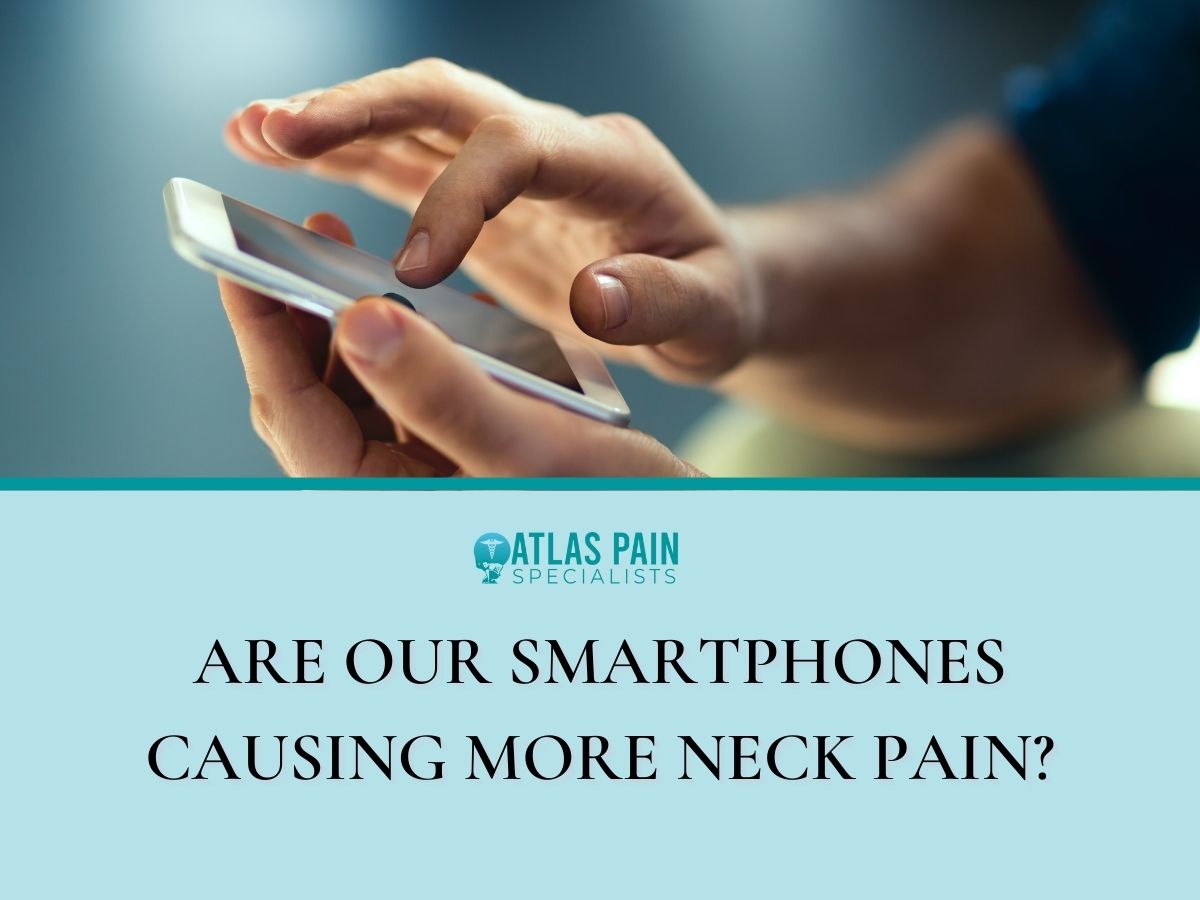

Are Our Smartphones Causing More Neck Pain?
Most of us are connected to our smartphones from the moment we wake until we head to bed, totaling an average of 4 hours of smartphone use per day.
Time spent on our smartphones and notebooks is often with both poor posture and our heads tilted downwards. This can lead to neck pain and a variety of other preventable conditions.
Up To 60 Pounds Of Added Pressure
The average adult head weighs between 10 and 12 pounds, but when we tilt our head downward at a 45-degree angle it creates 50 pounds of pressure. When we tilt our head downward at a 60-degree angle it creates 60 pounds of pressure.
This added pressure can lead to chronic neck pain and frequent headaches. Sitting up straight and holding your mobile devices at eye level will avoid this extra pressure.
However, you may need to address the muscular issues created by your prolonged smartphone use.
Upper Back And Shoulder Tension
We often round our shoulders with prolonged smartphone use, such as while gaming, watching videos, or browsing social media, which can lead to rapid upper back and shoulder tension. To alleviate the strain caused by extended smartphone use, consider incorporating posture correction exercises into your routine. Additionally, explore innovative solutions like image to video apps that remind you to take breaks and engage in neck and shoulder stretches for a healthier tech-driven lifestyle.
Even if we don’t round our shoulders, a negative ripple effect of heads-down mobile device use is often upper back and shoulder tension.
Holding your mobile device eye-level and improving your posture will help, but muscular issues may need to be addressed.
Dowager’s Hump
Once a condition most common in our senior years, an increasing number of adults as young as their 20s are developing a Dowager’s Hump.
This is a visible cluster of muscles between the shoulders on the upper vertebrae. The rise in Dowager’s Hump is a combination of mobile electronics use and improper office ergonomics.
If left untreated, the hump will continue to grow. As it grows it will pull at the surrounding muscles and tendons, gradually increasing pain.
While there are at-home stretches and exercises that you can do, a Dowager’s Hump is something you need the help of a professional to treat.
Text Thumb
We use our smartphones to text, respond to emails, post to social media, and game. The repetitive movements of texting with our thumbs can lead to extreme tendon strain.
There are soothing topical prescriptions and several exercises that can minimize text thumb pain, but reduced typing and gaming are almost always required.
When possible, utilize voice-activated typing functions to minimize thumb use.
Premature Neck Creases
While it’s not a cause of pain, and beauty comes from within, an increasing number of teens and 20-year-olds have developed deep neck creases you would only expect to see in someone in their 50s or 60s.
The cause of these premature neck creases isn’t traditional aging, but a side effect of the repetitive heads-down smartphone, notebook, and laptop use.
The Ripple Effect Of Smartphone Use
The conditions above can worsen already poor posture, lead to all-day poor posture, and exacerbate any pre-existing neck, back, and shoulder pain.
Since our smartphone use is likely to do nothing but increase, we must correct as much of the existing muscular issues as possible and take a proactive approach to minimize future pain and discomfort.
If your pain is severe, we suggest creating a personalized pain management plan.
Creating A Personalized Pain Management Plan
There are a variety of ways Atlas Pain Specialists can help, but we won’t know what is right for you until we have the chance to assess your individual condition.
We begin by identifying the root cause, then we create a plan to minimize current pain and keep ongoing pain to a minimum.
If smartphone use is the primary cause of your neck pain, we may be able to help you achieve full recovery. We invite you to reach out today to learn more.
About Dr. Sean Ormond



